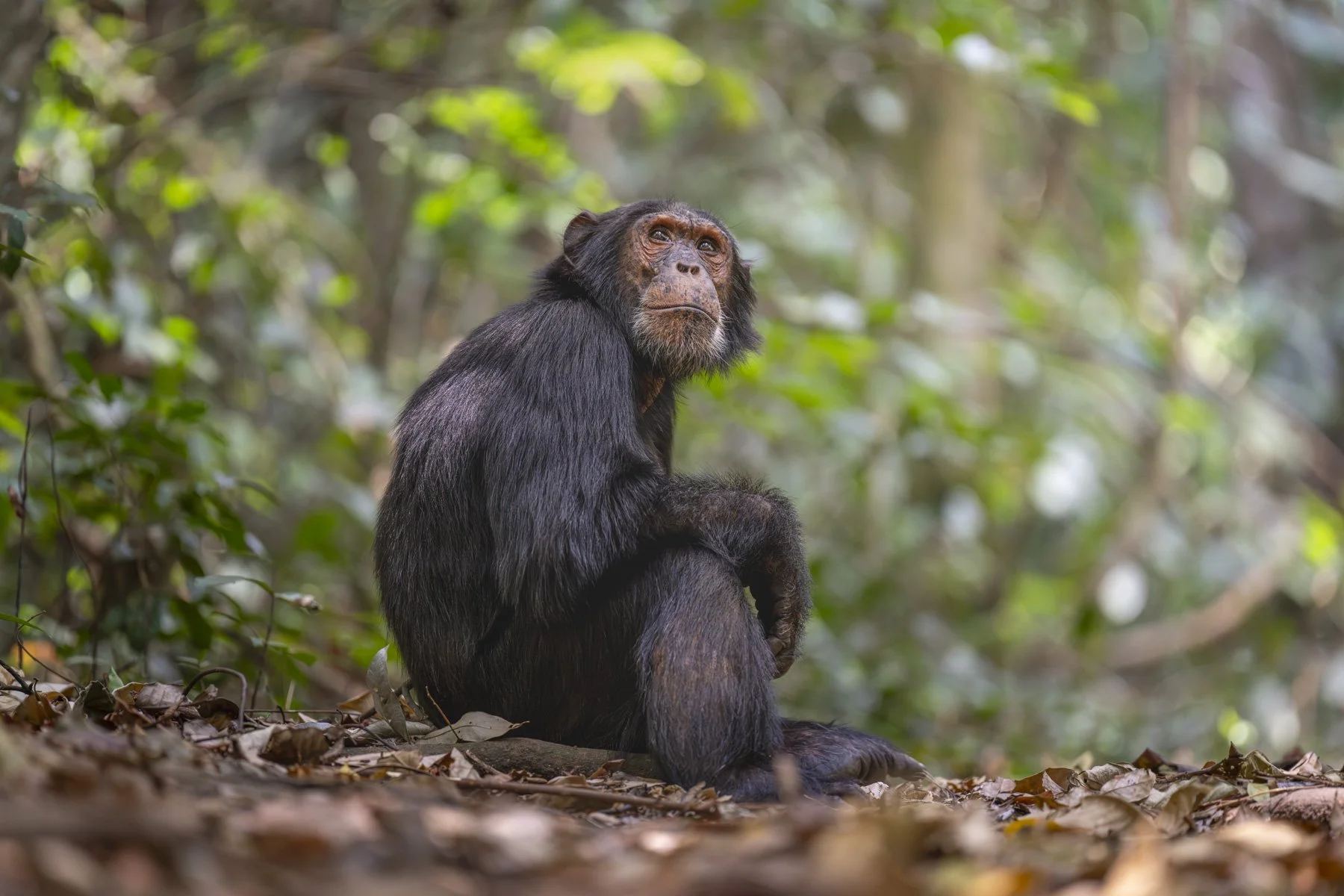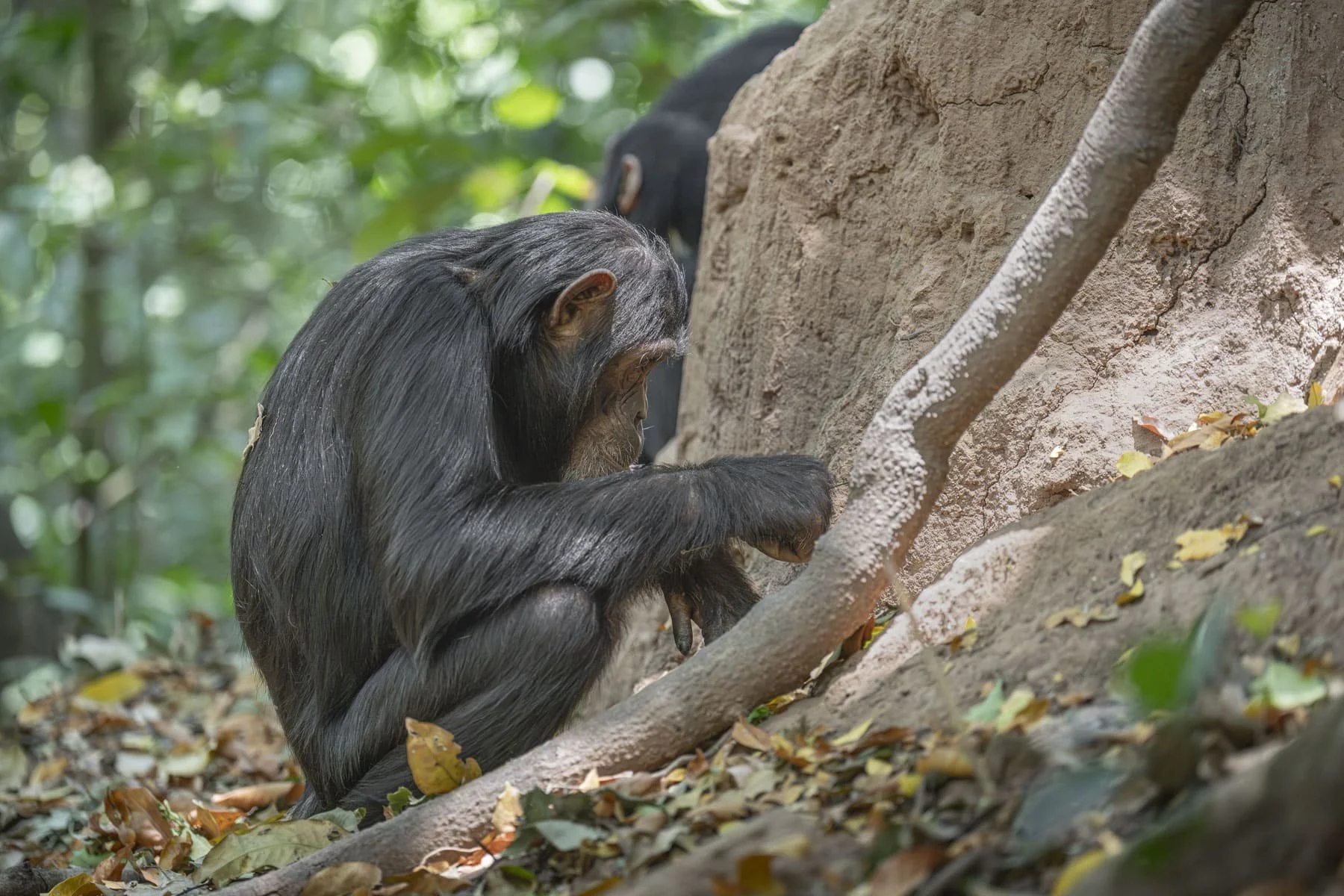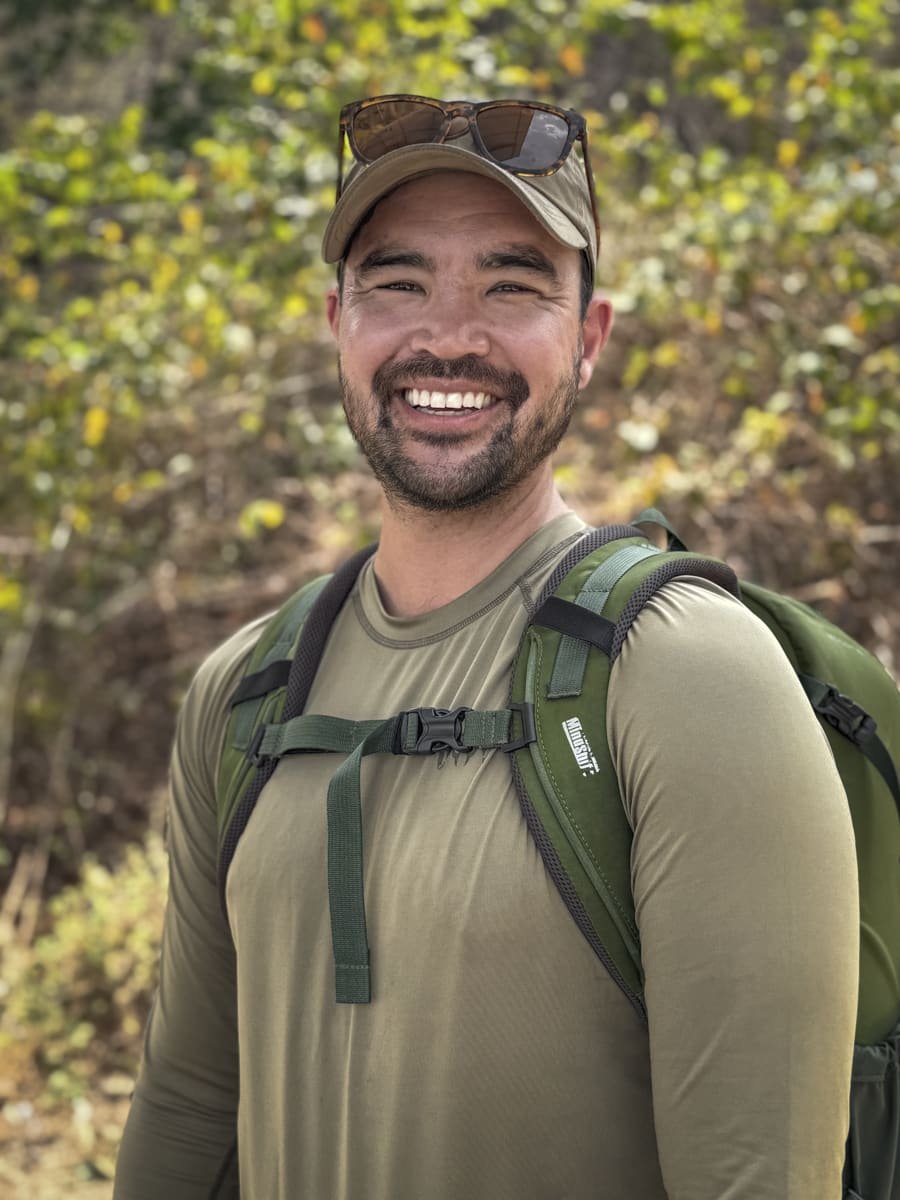The Complete Guide to Visiting and Tanzania’s Gombe National Park
An adult chimpanzee watches the distant canopy for approaching members of the family, in Tanzania’s Gombe National Park
Hidden along the forested shores of Lake Tanganyika in western Tanzania, Gombe Stream National Park is one of Africa’s smallest yet most remarkable wildlife sanctuaries. Spanning just 52 square kilometers, its significance to science, conservation, and chimpanzee research is immense.
This is the forest where Dr. Jane Goodall began her pioneering study of wild chimpanzees in 1960, a project that continues today through the Jane Goodall Institute and has forever changed our understanding of our closest living relatives.
A Brief History: From Research Camp to Global Icon
When a young Jane Goodall arrived in Gombe more than six decades ago, little was known about wild chimpanzee behavior. Through patience and empathy, she documented tool use, complex emotions, and social hierarchies, discoveries that revolutionized modern primatology.
Her research base evolved into the Gombe Stream Research Center, one of the longest-running wildlife studies on Earth. In 1968, Gombe was officially declared a Tanzanian national park, protecting its rainforest hills, clear streams, and the famous chimpanzee community still studied today.
Visiting Gombe feels like stepping into a living chapter of natural history, a rare chance to walk in the footsteps of discovery.
Getting There: The Journey Is Part of the Adventure
Reaching Gombe is an adventure in itself. The park lies about 20 kilometers north of Kigoma, a lakeside town accessible by air from Dar es Salaam or Arusha.
Flights: Air Tanzania offers regular flights to Kigoma, though departure times vary. Travelers can reach Gombe in a single day, but I recommend overnighting in Kigoma to rest before or after the journey.
Where to Stay: I usually stay at Lake Tanganyika Hotel, a comfortable option right on the shore, ideal for private boat transfers to Gombe. Avoid Kigoma Hilltop Hotel due to concerns about captive wildlife on the property.
From Kigoma, visitors travel by boat along Lake Tanganyika’s shoreline - the world’s longest freshwater lake - for about 2–3 hours, depending on conditions. The ride is scenic but can get choppy, so motion-sickness medication is worth considering.
There’s a public ferry from the main port, but I recommend arranging a private transfer with a reputable local operator for more flexibility. As you arrive at Gombe, you’ll see the park headquarters and research station before landing on a small, rocky beach.
Inside the park, there are no roads - only forest trails. All exploration is done on foot, guided by Tanzanian park rangers and local guides who track the chimpanzees daily. The experience is quiet, immersive, and intimate, utterly unlike the wide-open savannas of the Serengeti or Ruaha.
Where to Stay in Gombe National Park
Gombe offers two accommodation options inside the park:
Mbali Mbali Gombe Lodge – More upscale lodge (Note: I don’t recommend it due to questionable wildlife practices).
TANAPA Bandas and Guesthouse – Comfortable, budget-friendly options right on the lake. Bandas resemble safari tents and cost about $60 per person per night, while guesthouse rooms are $24 per person per night.
Park fees (as of 2025) are $118 per person per night, payable by credit card at the ranger station. Chimpanzee trekking incurs an additional fee. You’ll also want to budget generously for tips - 50,000 TSH or more per person for your local guide, 50,000 for each boat operator (if they stay with you), and the same for your cook.
I strongly recommend staying at the TANAPA bandas, which each come with a shower and toilet and are a two-minute walk to the departure point for chimpanzee treks. There’s a small bar selling drinks and bottled water, but guests must bring or arrange food. No restaurant or location to buy food is otherwise available on-site. I use the Kigoma-based operator Beacon Adventure and Safaris to handle logistics - they organize cooks, supplies, and permits, making the process stress-free.
There is reliable solar power available during the day and outlets in every tent. I bring a power bank and a small USB-powered fan, the latter of which is perfect for cooling off after a long hike or sleeping more comfortably at night. Headlamps or a small flashlight is equally as important.
Chimpanzee Trekking: What to Expect
Gombe is home to just under 100 chimpanzees, divided among three main social groups: the Kasekela, Mitumba, and Kalande communities. The Kasekela group, which Dr. Jane Goodall first studied in the 1960s, remains the most well-known and is centered near the park’s research station. Each community occupies its own territory within the forest, and their dynamics - alliances, rivalries, and shifting borders - have provided some of the world’s most detailed insights into chimpanzee behavior and social structure.
At Gombe, the Kasekela and Mitumba communities are habituated to human presence, meaning researchers and visitors can observe them at relatively close range. The Kasekela group, in particular, is the one that’s been studied continuously, making it the most frequently visited. The Kalande community, on the other hand, remains unhabituated. They avoid people and are only monitored indirectly through calls, nests, and other signs.
Within each community, individual chimpanzees belong to family lineages, and those are sometimes referred to by letters - for example, the F family, G family, or P family - named after the the “founding” mother’s name.
An adult chimpanzee using a twig to fish for termites, a remarkable foraging skill passed on from mothers to children
For trekking, each morning begins early, as rangers locate the chimpanzee groups based on the previous day’s observations. Treks range from 30 minutes to several hours, depending on the chimps’ movements. Once you find them, you’ll spend up to one hour observing and photographing these extraordinary primates as they groom, play, and communicate.
Watching these chimpanzees in their forest home is one of the most moving experiences you can have in Africa. It’s also a privilege that comes with responsibility. Be sure to keep at least 10 meters away, wear a mask, and move quietly and calmly. Even small changes in our behavior can affect theirs, and illnesses that are mild for us can be deadly to them. The best encounters happen when we simply blend into the forest, let the chimps go about their day, and witness their world on their own terms.
The hike itself can be challenging, as the forest is steep with dramatic hills that plunge into Take Tanganika. The dry season (July–October) offers the best trekking conditions, while the short rains (November) and long rains (March–May) can make trails slippery but beautifully lush. Proper hiking boots are necessary and hiking poles are incredibly useful for balance, particularly during steep descents. Likewise, be sure to bring two liters of water. If traveling with a boat, the operator can meet you at the shoreline to save you a hike back to camp after your trek.
Beyond chimpanzees, you may also see olive baboons, red-tailed monkeys, colobus monkeys, and over 200 species of birds. After a trek, the crystal waters of Lake Tanganyika invite a refreshing swim. Just avoid swallowing the water to minimize risk of schistosomiasis.
Photography Tips for Gombe National Park
Light conditions in Gombe can challenge even experienced photographers. The rainforest canopy filters and shifts light constantly, making exposure tricky.
Here are a few quick tips:
Use fast lenses (f/2.8) to capture subjects in low light.
Bring a camera body with strong ISO performance for handheld shooting.
A mid-telephoto (70–200mm) is ideal for portraits and behavior shots. A longer lens up to 400mm can be helpful for when family groups are spread out, which often happens on Gombe’s narrow trails.
For a deeper dive, see my guide: How to Photograph Chimpanzees for gear and composition tips tailored to forest conditions.
Planning Your Visit to Gombe
Beyond its beauty, Gombe National Park represents something profound - a living connection between science, conservation, and ethical wildlife tourism. Each visit supports local communities and funds chimpanzee protection.
If Gombe calls to you, I can help design a bespoke chimpanzee photography safari, either as a standalone experience or as an extension to your other Tanzanian adventures. Join me in the field for a hands-on photographic journey that captures the spirit of these remarkable primates and the landscapes they call home.





